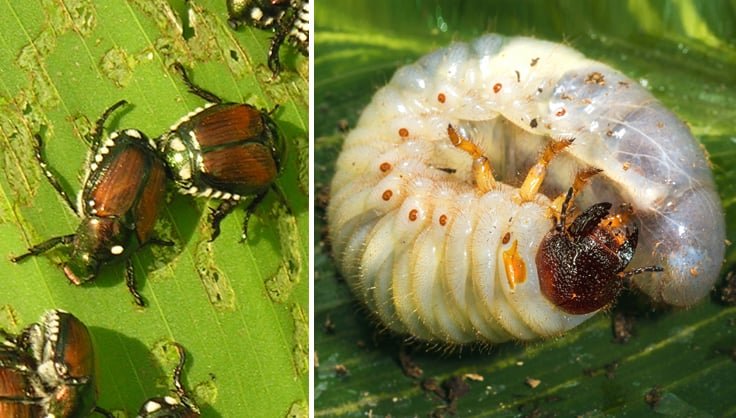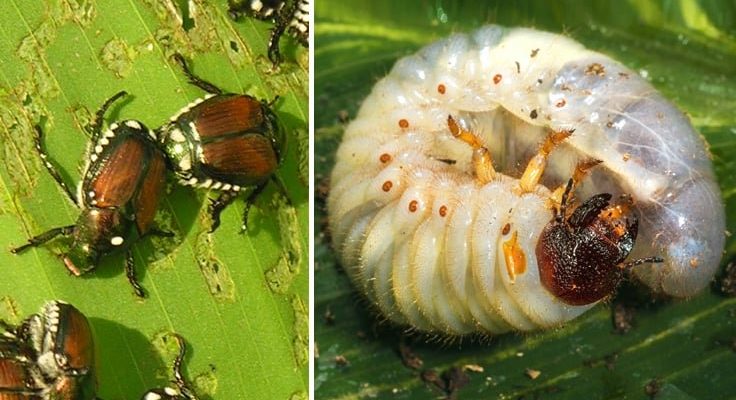
Imagine you’re on a quest, searching for hidden treasures in your garden. Knowledge is your treasure map! Understanding how to identify Japanese beetle grubs versus their look-alikes isn’t just about protecting your lawn; it’s also about keeping your garden healthy and thriving. So, let’s dive into this fascinating world and equip you with the skills you need.
What Are Japanese Beetle Grubs?
Japanese beetle grubs are the larval stage of the **Japanese beetle**, a shiny green pest that can wreak havoc on your garden. These grubs are C-shaped, smooth, and usually white or light tan, with a dark brown head. Typically measuring about 1 inch long when fully grown, these critters feed on roots and organic matter in the soil, particularly in your lawn.
You might be wondering why these grubs are such a big deal. Well, they can cause significant damage if left unchecked. They munch on the roots of grass, which leads to patches that turn brown and eventually die. Have you ever looked out at your lawn and found a bare patch? That could be a sign of a grub problem!
Life Cycle of Japanese Beetles
Understanding the life cycle of Japanese beetles is crucial for recognizing when and where to look for grubs. The life cycle has several stages: egg, larva (the grub), pupa, and adult beetle. The adult beetles emerge in late spring to early summer, laying eggs in the soil.
After about two weeks, those eggs hatch into grubs. They’ll spend the next several months feeding on grass roots before they enter the pupal stage. Once they reach maturity, they’ll break the surface as adult beetles, ready to start the cycle all over again. This means the best time to check for grubs is in the late summer to early fall.
Where to Find Japanese Beetle Grubs
If you’re on the lookout for Japanese beetle grubs, your garden is the place to start. They tend to thrive in moist, well-nourished soil, which is often where healthy lawns and gardens are found. You might want to check under a few of those brown patches in your yard for clues.
To find them, you can dig up small sections of your lawn, about 4 to 6 inches deep. Gently remove a section of grass and soil, and you may just stumble upon some grubs. The appearance of two to three grubs in a square foot can indicate a problem. If you find more, it’s time to take action!
How to Differentiate Japanese Beetle Grubs from Other Larvae
When it comes to recognizing Japanese beetle grubs versus other types of grubs, it helps to know what you’re looking for. Here’s a handy guide:
- Color: Japanese beetle grubs are typically white with a light tan head, while other grubs, like June bugs, can be a similar color but often have a larger size and different body shape.
- Shape: Japanese beetle grubs are C-shaped. Other types might be more elongated or varying in shape.
- Size: While Japanese beetle grubs usually grow to about 1 inch long, some other grubs can be larger, reaching up to 2 inches in length.
You might find it helpful to take a photo of any grub you find. That way, you can compare it later with images of Japanese beetle grubs online. A **quick Google search** can be quite illuminating!
Signs of Infestation
Aside from the visible grubs, there are other signs that might indicate a Japanese beetle grub infestation. You may notice patches of grass that feel spongy underfoot or areas that seem to peel back easily. The lawn may also attract animals like birds or raccoons, which dig around looking for food—those grubs!
Another indicator is the presence of adult beetles. They usually come out in June and July, and if you see them devouring your roses and other plants, it’s a sure sign that they’ve laid eggs in your soil. It’s all connected, after all!
What to Do If You Find Japanese Beetle Grubs
So, you’ve dug up some grubs and confirmed they’re Japanese beetle grubs. What now? First off, don’t panic! There are various ways to deal with them. Here are some options:
- Handpicking: This might sound a bit gross, but handpicking grubs can work for smaller infestations. Just wear gloves and toss them into a bucket of soapy water.
- Beneficial Nematodes: These microscopic worms can be applied to your lawn and will naturally seek out and kill grubs.
- Insecticides: If the infestation is severe, you may want to consider a targeted insecticide designed to kill grubs. Just make sure to read the instructions and consider environmental impacts.
Remember, it’s always a good idea to consult with a local extension office or pest control expert to determine the best method for your situation.
Preventing Future Infestations
Once you’ve dealt with the current grubs, you might be wondering how to prevent them from returning. Here’s how you can take proactive steps:
- Healthy Lawn Care: Maintain a healthy lawn through proper watering, fertilizing, and aerating. A strong lawn can better withstand grubs.
- Companion Planting: Some plants repel adult Japanese beetles. Consider planting garlic, chives, or marigolds around your garden.
- Regular Monitoring: Keep an eye on your lawn throughout the season. Early detection is key to tackling any potential infestations.
It’s a bit like caring for a pet; the healthier you keep your lawn, the less likely it will attract unwanted guests.
Wrapping Up
Being able to recognize Japanese beetle grubs versus others is an essential skill for any gardener or homeowner. It’s about understanding your environment and taking proactive steps to protect your plants and lawn. The next time you’re out in your yard, you’ll feel like a knowledgeable guardian of your greenery, ready to spot those pesky grubs and take action!
With a little practice and awareness, you’ll be well on your way to a healthy, vibrant garden, free from the hidden menace of Japanese beetle grubs. Happy gardening!

